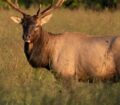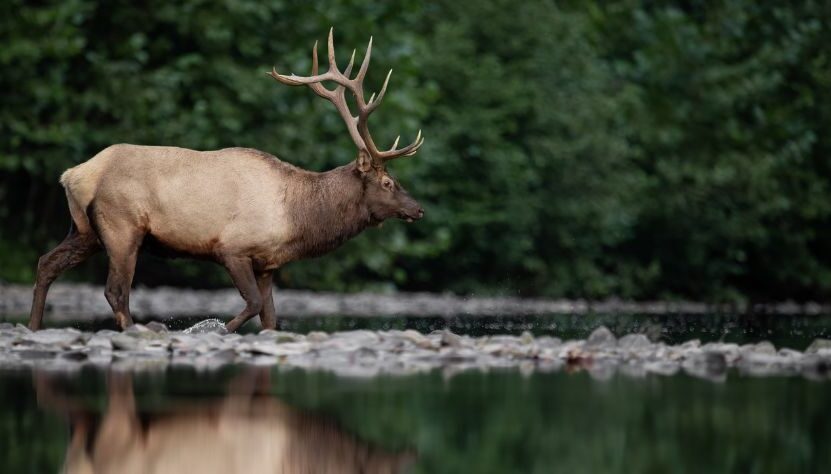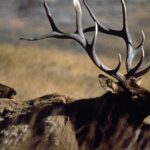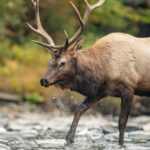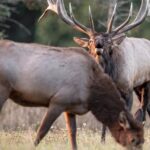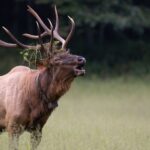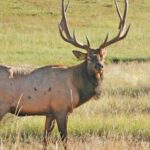Editor’s Note: Longtime, award-winning outdoor writer J. Wayne Fears of New Market, Alabama, has taken 12 bull elk. He’s a nationally known gun writer who has written for and has written for most of the gun magazines in the past and present.
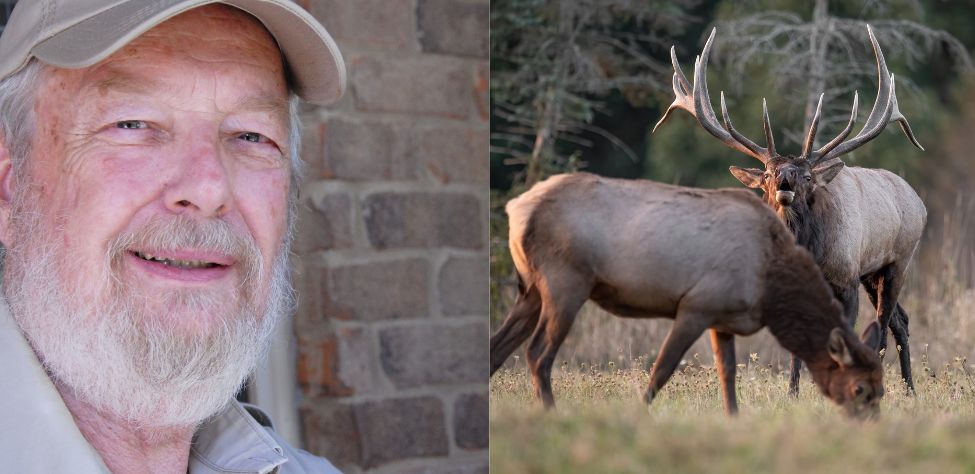
Another question I’m often asked is, “What caliber of rifle do you feel is best for elk hunting and why?” My favorite caliber for elk is a .280 Remington. That caliber is accurate with hand loads and flat shooting up to 400 yards. The .280 Remington is a .306 cartridge necked down to a .280 caliber. I use 4350 powder, which is accurate and short-cut, single-base, extruded rifle powder in the extremely popular 4350 burn range. A highly versatile powder, 4350 can be used in a wide range of cartridges with excellent results. I like the .165 Nosler partitioned bullets.
The second caliber I like, and for most hunters, it may be their number-one caliber, is .30-06. This caliber has been around forever, and I’ve taken five bull elk with this caliber. I like it because the ammunition is easy to get, it doesn’t hammer you (recoil as hard as some of the larger calibers), and traditionally, it has performed well when taking elk out to 300 or 400 yards or less.
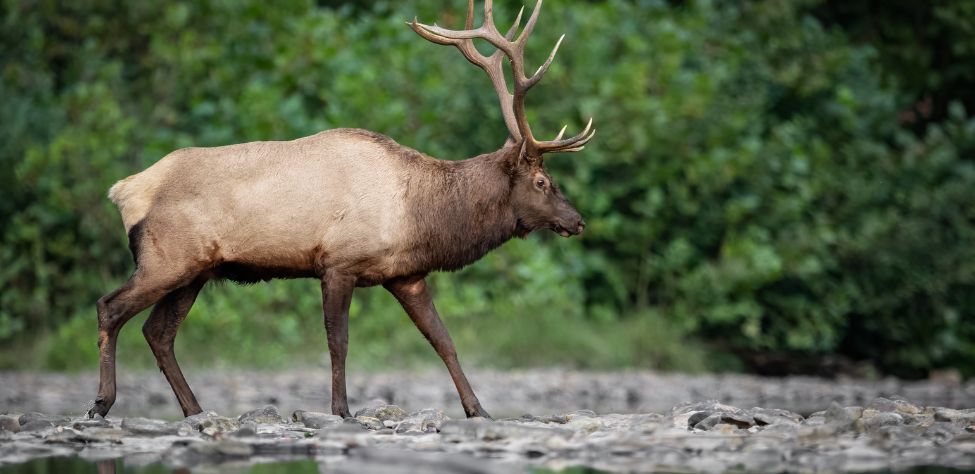
I prefer The number three caliber, the .300 Winchester Magnum (Win Mag), a belted, bottlenecked magnum rifle cartridge introduced by the Winchester Repeating Arms Company in 1963. The .300 Winchester Magnum is a magnum cartridge designed to fit in a standard rifle action. This cartridge can deliver better long-range performance with heavier, larger ballistic coefficient projectiles than any standard and short length .30 caliber cartridge. Military and law enforcement departments have also adopted this cartridge as a long-range sniper round, intended for longer-range shots. The .300 Win Mag is extremely versatile and has been adopted by many users, including big game hunters, target shooters, military units, and law enforcement departments. You can reach out and take an elk at longer distances with this caliber than you probably can with the other two, but you’ll probably take a beating when you squeeze the trigger. However, the .300 Win Mag is probably the most popular caliber many elk hunters use.
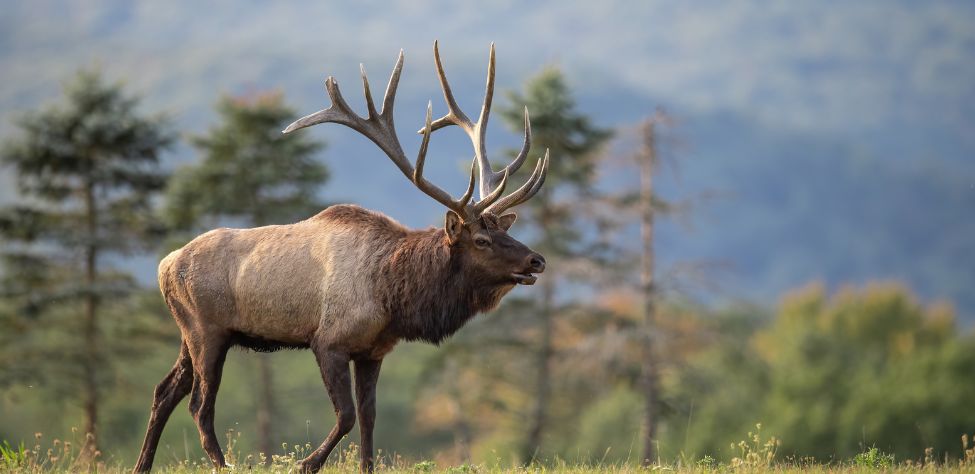
Some people prefer to use it with a muzzle brake to reduce the recoil somewhat. However, I don’t use a muzzle brake because, without ear protection, I’m afraid that caliber will drastically reduce my ability to hear even more than I already have. Younger people, however, prefer the .300 Win Mag, and hunters and shooters who are smart enough to use some ear protection also seem to like this caliber. I’ve taken both bear and elk with a .300 Win Mag, and it can devastate a critter.
Hunters can choose between bigger and smaller calibers for these three calibers. But in my opinion, these three—.280, .30-06, and .300—are the best calibers for elk hunting.
Looking for more content? Check out our YouTube channel and watch “Jim Shockey – Junk Salesman to Outdoor Entrepreneur” by John E. Phillips.
Expert Guidebooks on Elk Hunting: Best Sellers
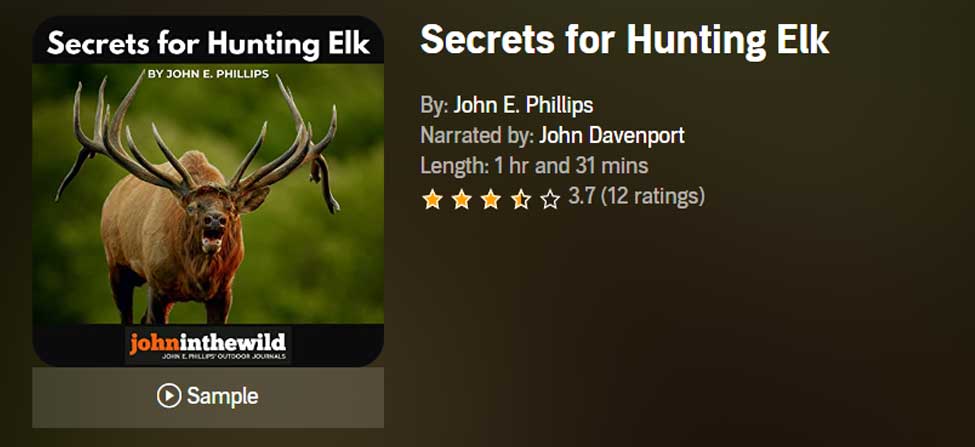
Secrets for Hunting Elk
The quickest, easiest (if there is an easy way), and safest way to find and take that bull elk of a lifetime will be to hunt with a guide.
Chad Schearer, a longtime Montana guide and TV personality, told me, “My hunter is my gun. If I get to the elk, and my hunter isn’t with me, then we don’t take the elk. My job is not only to find the elk but also to help the hunter get to the elk and make the experience as enjoyable as I can for him.” That’s the kind of fella with whom I want to go elk hunting.
An elk hunt can be tough, but it doesn’t have to be so tough that you don’t enjoy it. That’s why this elk hunting book starts with the confessions of an elk guide and with Chad Schearer’s philosophy of what the guide and the hunter’s relationship should be.
A good portion of your success will depend on your physical condition, and Matt Morrett of Harrisburg, Pennsylvania explains how an eastern hunter can get ready physically during June and July to hunt western elk, the animals he describes as, “Like deer or turkeys on steroids.”
Wayne Carlton, well-known elk hunter and TV and video personality from Montrose, Colorado, tells us what types of elk calls to use and what to say to the elk. Mike Miller of Colorado, another elk guide and Mossy Oak video personality, has tactics for the best equipment for bowhunting and gun hunting elk.
You’ll learn helpful strategies and hunting tips in this book, as well as some straightforward hunting methods that will help to make your elk hunt more successful.
“Thanks to the advice in your elk hunting books, I was able to call up a nice 6-point (6X6) bull elk! He was bugling like crazy. I called him in from about a ¼ mile away. Called him into bow range (about 40 yards away). It was a thrill!” ~Rob Brannon
VERSIONS: AUDIBLE & KINDLE
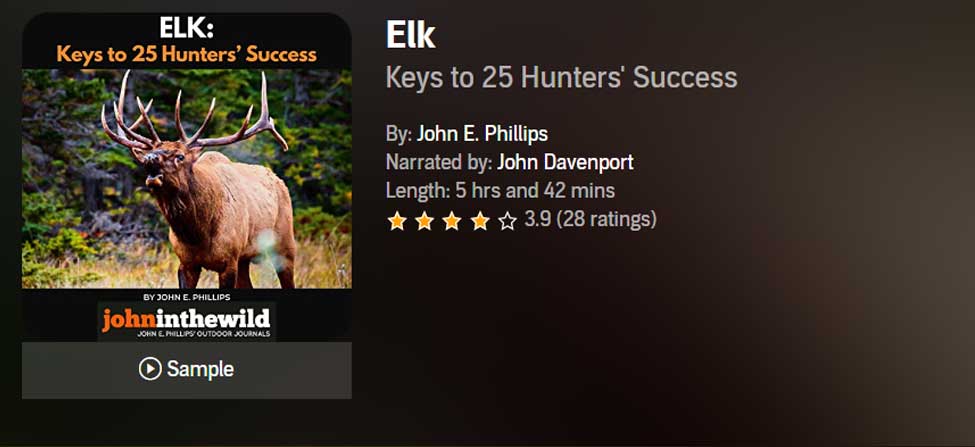
Elk: Keys to 25 Hunters’ Success
Often just one tip or tactic makes the difference in whether you take an elk home to dinner or have to hike back to the truck by yourself. In John E. Phillips’ latest elk book, Elk: Keys to 25 Hunters’ Success, you’ll learn from successful elk hunters the strategies they use to find and take elk.
Many know that the technique that seems to work most often is to hunt where other elk hunters don’t and understand where the elk are before you go on a hunt by studying data from each state, visiting HuntData (see chapter 1), examining maps, and reading postings on elk forums.
This book also tells you how to get ready physically for an elk hunt, including participating in Train to Hunt Competitions, what gear you need to take, how to enjoy a successful do-it-yourself elk hunt, or how to pick the best elk guide for you. You’ll also hear about the X System and the Broken Y System of hunting elk.
Although no one person has all the answers on how to help you find and take your elk, I’m convinced that this book’s outdoors men and women will teach you how to have satisfying elk hunts.
As my friend Karl Badger once told me, “Elk hunting doesn’t get any better than when I ride horses into the high backcountry, see two grizzly bears, hear a pack of wolves howl close to camp all night long, eat plenty of delicious food prepared on a fire and enjoy the company of good friends.”
VERSIONS: AUDIBLE, KINDLE & PRINT
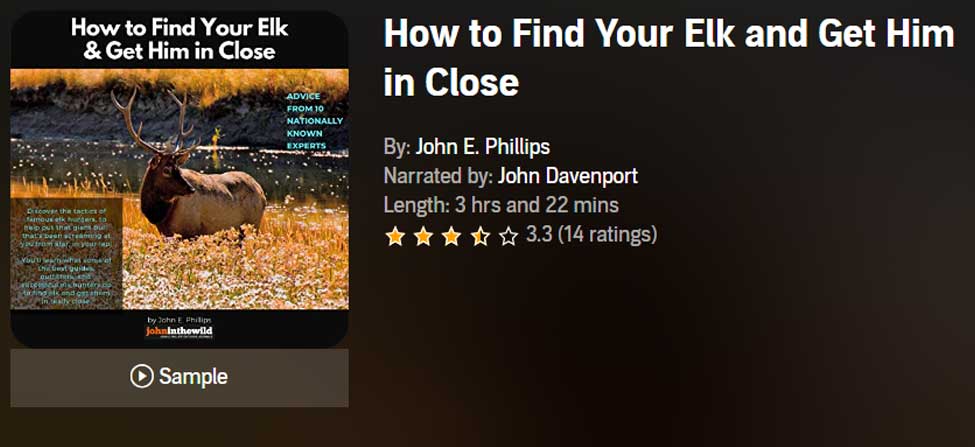
How to Find Your Elk and Get Him in Close will teach you the tactics of 10 nationally known elk hunters, to help put that giant bull that’s been screaming at you from afar, in your lap. You’ll learn what some of the best guides, outfitters, and successful elk hunters do to find elk and get them in really close.
Also in this audiobook, you’ll notice that the majority of the experts call elk to within bow range. We selected numerous bowhunters and bowhunting guides, since the bowhunter has to get much closer to a bull than the gun hunter does – often less than 20 or 30 yards – practically in your lap.
On one elk hunt, I’d heard this bull bugle all morning. My guide had called him within 30 yards, and he was standing just inside black timber. I saw the smoke from his nose wafting out into the icy air less than 30-yards away. All the bull had to do was step out, and I could take the shot with my bow. But then, through no fault of my guide or me, the bull vanished.
The only conclusion I could come up with to understand why the bull I wanted to take with my bow hadn’t stepped out and given me a shot, was because he got raptured. He evidently had left the earth with no trace of himself.
This hunt was when I started wanting to learn more about hunting elk up close. In this book, I’ve tried to find some of the most knowledgeable, experienced, and practical elk hunters. I’ve always found that the best way to learn any outdoor skill, is to either hunt or fish with the best sportsmen in that field.
Often, in elk hunting, that means elk guides, who generally hunt every day of the season and receive a salary for every hunter they guide. So, I’ve put together a group of some of the best elk hunters I know to help us all learn how to find bull elk and get them in close.
VERSIONS: AUDIBLE, KINDLE & PRINT
Tomorrow: Learn the Best Guns for Elk


